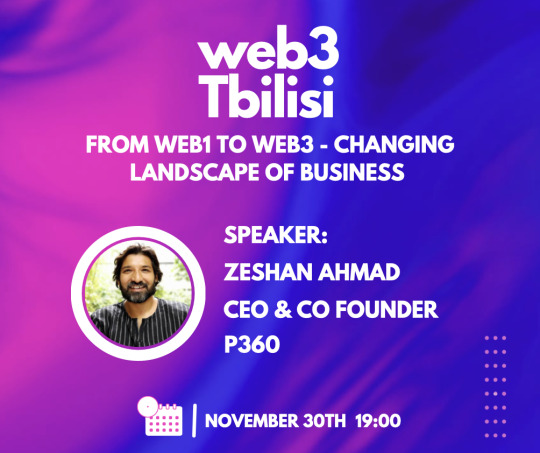#what is web3
Text
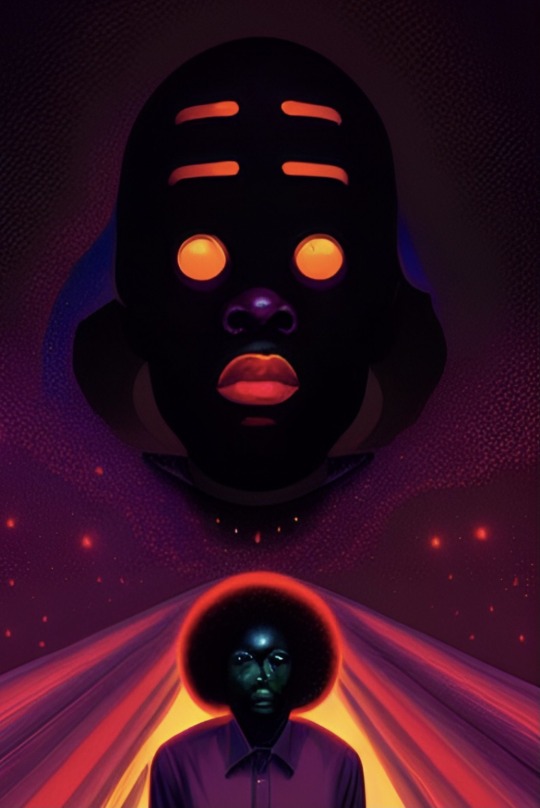
WINGMAKERS INTER DIMENSIONAL DEITIES
ARTWORK BY 𝖆𝖓𝖈𝖎𝖊𝖓𝖙𝖙𝖍𝖊𝖇𝖑𝖆𝖈𝖐𝖆𝖓𝖌𝖊𝖑
#art#black art#black woman#artists on tumblr#ancienttheblackangel#black people#nftcollection#digital art#digital illustration#what is web3#metaverse#crypto
87 notes
·
View notes
Text
What exactly is Web 3.0 (Web3)?
Web 3.0 (Web3) is the third generation of web technology evolution. The web, also known as the World Wide Web, is the foundational layer that provides website and application services on the internet.
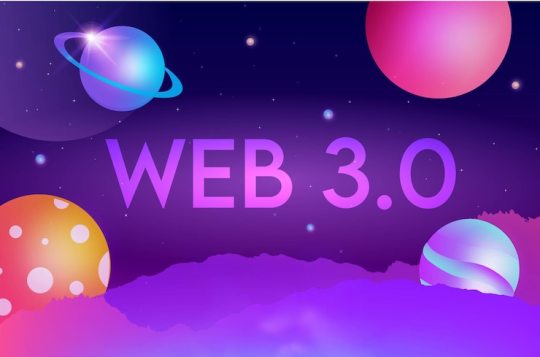
Because Web 3.0 is still evolving and being defined, there is no canonical, universally accepted definition. But one thing is certain: Web 3.0 will place a strong emphasis on decentralized applications and will make extensive use of blockchain-based technologies. Machine learning and artificial intelligence (AI) will also be used in Web 3.0 to help empower more intelligent and adaptive applications.
The concept of a semantic web is another component of the emerging definition of Web 3.0. Tim Berners-Lee, the creator of the web, is among those who have advocated for the incorporation of semantic technology into the web.
It took more than ten years to transition from Web 1.0 to Web 2.0, and it is expected to take just as long, if not longer, to fully implement and reshape the web with Web 3.0.
If the trend of change is traced from Web 1.0, a static information provider where people read websites but rarely interacted with them, to Web 2.0, an interactive and social web enabling user collaboration, then Web 3.0 will change both how websites are created and how people interact with them.
How does Web 3.0 function?
Hypertext Markup Language (HTML) defines the layout and delivery of webpages in Web 1.0 and Web 2.0 technologies. HTML will remain a foundational layer in Web 3.0, but how it connects to data sources and where those data sources reside may differ from previous generations of the web.
Many Web 2.0 websites and nearly all applications rely on some form of centralised database to deliver data and enable functionality. Instead of a centralised database, Web 3.0 applications and services use a decentralised blockchain. The basic idea behind blockchain is that there is no arbitrary central authority, but rather a form of distributed consensus.
The concept of a decentralised autonomous organisation is an emerging governance ideal within the blockchain and Web 3.0 communities (DAO). Instead of a centralised authority governing platform operations, a DAO, Web 3.0 technologies, and communities provide a form of self-governance in an attempted decentralised approach.
Web 3.0 is fundamentally more compatible with cryptocurrency than with fiat currency. The use of cryptocurrencies, which are all built and enabled on top of blockchain technology, enables finance and the ability to pay for goods and services with a decentralised form of payment across Web 3.0.
Both Web 1.0 and Web 2.0 were built primarily with the IPv4 addressing space in mind. As a result of the web's massive growth over the decades, there is a need for more internet addresses in Web 3.0, which IPv6 provides.
Key features of Web 3.0
AI, semantic web, and ubiquitous properties may all be considered when designing Web 3.0. The goal of using AI is to provide end users with faster and more relevant data. A website that uses AI should be able to filter through and provide data that it believes a specific user will find useful. Because the results are websites that have been voted on by users, social bookmarking as a search engine can provide better results than Google. These outcomes, however, can be manipulated by humans. AI could be used to distinguish between legitimate and falsified results, producing results similar to social bookmarking and social media but without the negative feedback.
An artificially intelligent web will also include virtual assistants, which are already available as features built into devices or through third-party apps.
The semantic web concept is to categorize and store information in a way that teaches a system what specific data means. In other words, a website should be able to understand words entered into search queries in the same way that a human would, allowing it to create and share more relevant content. This system will also make use of AI; the semantic web will teach a computer what the data means, and AI will then use the information.
Several key Web 3.0 features, including the following, help to define what the third generation of the web will likely be all about:
Decentralized
Web 3.0 will be decentralized, as opposed to the first two generations of the web, where governance and applications were largely centralized. Applications and services will be enabled in a distributed manner, with no centralized authority.

Blockchain-based
Blockchain enables the development of decentralized applications and services. Data and connections between services are distributed differently with blockchain than with centralized database infrastructure. In a decentralized world, blockchain can also enable an immutable ledger of transactions and activity, assisting in providing verifiable authenticity.
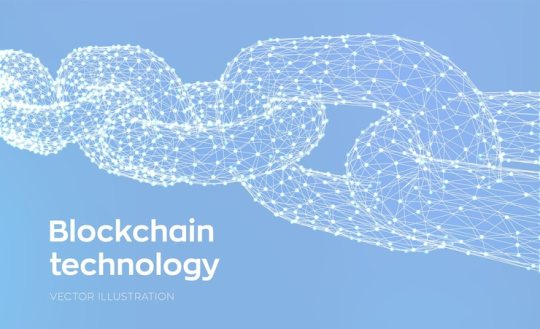
Cryptocurrency-enabled
The use of cryptocurrency is a key feature of Web 3.0 services, and it has largely replaced the use of fiat currency.

Self-sufficient and artificially intelligent. More automation in general is a key feature of Web 3.0, and this automation will be largely powered by AI.
Read more https://kaysalim.blogspot.com/
#what exactly is web3#what is web 3.0#what is web 3.0 crypto#what is web 3.0 and metaverse#what is web3#how does web 3.0 work#web 3.0 vs web 2.0#ethereum web 3.0#web 3.0 projects#web 3.0 examples#web 3.0 metaverse#web 3.0 explained#web 1.0 vs web 2.0 vs web 3.0#web 3.0 explainer#web 3.0 app#web 3.0 simplified#web 3.0 definition#web 3.0 blockchain#web 3.0 development#web 3.0#web 3.0 crypto#web 3.0 for beginners#web 3.0 and blockchain
3 notes
·
View notes
Text
Exploring Web3.0: Features, Innovations, and Technologies

Explore the features, innovations and technologies of web 3.0, as it is called the third generation of world wide web. It is built on top of blockchain technology and advancements in the Semantic Web which defines the web as a network of meaningfully linked data. Web 3.0 is intended to be decentralized, open to all, and transparent. AI, blockchain, metaverse etc are some of the examples of web 3.0.
0 notes
Text

#what is web3#dapp development services#nft crypto#crypto#crytpocurrency#wallet#digital wallet#digital art#nftcollection#digitalcurrency#web3 dapps#meep morp#aliencore#moose blood#meepmeep#alien goddess
1 note
·
View note
Text
#startupph#tech#startups#lightweightsolutions#business#entrepreneur#webdeveloper#web3#web3 news#web#webdevelopment#website#web3 adoption#what is web3
0 notes
Text
Esta es mi primera publicación en tumblr.
Estaré subiendo contenido del ecosistema blockchain y todo lo que se necesita aprender para dominarlo para el año 2023🔥
si queréis más información, siempre podéis encontrarla en :
1 note
·
View note
Text
6 Key Web 3.0 Features You Need to Know
Web 3.0 is the third iteration of the internet that interconnects information in a decentralized method to provide a quicker and more customized user experience. Users retain control over their data and content and can sell or trade their data without losing ownership, risking privacy, or relying on intermediaries. Are you eyeing to expand your business verticals in web3?

Get in touch with us to learn more about our web3 services:
https://tiltlabs.io/ or mail us at [email protected].
1 note
·
View note
Text
What is the Metaverse and its impact on the events industry
The Metaverse simply is the coming together of our actual physical world in a shared virtual space. In other terms, it is the representation of the environment we are living in, in a 3D virtual world which can be accessed through a browser, headset or even a mobile application. The Metaverse thereby allows people to have real-time interactions and curate shared experiences spanning geographies. Currently, it offers unlimited, interconnected virtual communities where people can socialize, collaborate and do much more. The mediums which have helped realized and are powering this imagination are technologies such as Virtual Reality (VR), Augmented Reality (AR) and Blockchain. Essentially, Blockchain forms the understructure of the Metaverse.
The Metaverse is increasingly seen as a concept that will juggernaut and foray into many industries bringing a paradigm shift, and one of them is the events industry. This is because events in general have the flexibility to be physical as well as virtual, or even hybrid (physical+virtual) depending upon the type and necessity of the event. Below are a few examples of how the Metaverse has been and will be leveraged.
Apart from its immersive and captivating ability, the Metaverse is also seen as a convenience that can cut across vast geographies to connect and collaborate with people. Events such as conferences, meetings have all embraced the virtual shift. Since the realization of the Metaverse across various platforms, several events have embraced and actualized their events inside the Metaverse.
One of the biggest sporting events of the year, The Australian Open tennis tournament was hosted in the Metaverse earlier this year. Fans, across the globe were able to get the actual feel of being inside the stadium from the comfort of their home. Through VR and AR technologies, tennis fans could get access to exclusive gaming content, behind the scenes footage of the tournament, and were also able to have virtual meetup with players.
A fashion event inside the Metaverse also took place earlier this year which saw fashion exhibitors from across the globe taking part, with many tabloids too covering the event.
Source — Web3 Event Solution
0 notes
Text
Exploring the potential of web3 | The decentralized web
Exploring the potential of web3 | The decentralized web
Web3, also known as the decentralized web or the third generation of the World Wide Web, refers to the development and integration of blockchain technology and other decentralized technologies into the existing web infrastructure. This new generation of the web is focused on decentralization, transparency, and user control.
The first generation of the web, known as Web1, was primarily focused on…

View On WordPress
#how to invest in web3#web 3.0 applications#web 3.0 blockchain projects#web 3.0 companies#web 3.0 crypto#what is web3#when will web 3.0 be released
1 note
·
View note
Text
What exactly is a Web3 browser and how does it function?
SilverLineSwap-SPARC BETS
Web3 browsers, such as Brave, enable users to access DApps, integrate cryptocurrencies, and surf the decentralized web with increased privacy and security. A web service is a software application that allows computer-to-computer communication via the internet. Web services, on the other hand, are not new and often take the shape of an application programming interface (API).
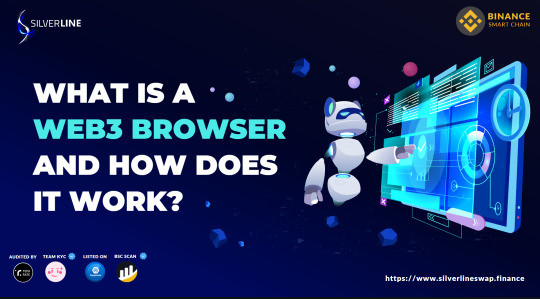
The World Wide Web (www) is a collection of interconnected hypertextual content that may be viewed online. For example, a user views online sites that may contain multimedia using a web browser and navigates between them using hyperlinks. Tim Berners-Lee created the World Wide Web in 1989 while working at CERN, the European Organization for Nuclear Research, in Geneva, Switzerland. Berners-Lee has since actively controlled the development of web standards and campaigned for the construction of the Semantic Web, often known as Web3. The term “Web3” refers to different evolutions of online interaction and usage that have taken place along diverse pathways, such as the creation of a geographic web, the employment of artificial intelligence technologies, and the availability of information through numerous non-browser apps or Web3 browsers. The Web3 browser opens up a new world of decentralised apps (DApps) and digital commerce to users.
What exactly is a Web3 browser?
Users can connect with blockchain-based decentralised apps using Web3 browsers. Web3 technologies such as distributed ledgers, artificial intelligence, Metaverse, and others aspire to build a next-generation internet that is open to all and provides advantages.
A Web3 browser’s key features include:
Immutable environment, which means trusting that users will obtain the digital product exactly as the author intended.
increased transparency and security.
improved browsing performance.
Complete user privacy and confidentiality are guaranteed.
Connecting bitcoin wallets to several blockchains
Because of decentralization, you have complete control over the material.
Furthermore, search engines may identify microcontent sentences that have been automatically labelled in Web3, necessitating the conversion of vast amounts of macroweb1 content into microcontent. Because tagging can reduce the uncertainty introduced by homonyms and synonyms in the search process, the final result may be a more accurate search.
How does a Web3 browser function?
Web3 internet browsers provide access to the world of DApps and the digital economy. The Web3 browser decentralises control by exploiting encryption and public blockchains, eradicating centralised organizations. Consumers are also financially rewarded for interacting with content or seeing carefully selected advertisements on decentralised social media platforms and Web3 browsers. However, how do Web3 browsers alter the online experience? Web3 browsers allow users to access regular browser capabilities. They are essentially decentralised programmes that let users keep control of their data while sharing the income generated by it. Is Chrome, then, a Web3 browser? Chrome, like Firefox and Safari, is a Web2 browser. Users can, however, access Web3 apps using Web2 browsers by utilising a Web3 wallet such as MetaMask.
How do I use a Web3 browser?
Web3 wallets may be integrated into regular web browsers, offering DApp browser capabilities by allowing flexible access to decentralised apps without the intervention of external intermediaries while preserving full control of their assets. Furthermore, users may access the Web3 economy without having to go through any Know Your Customer (KYC) or Anti-Money Laundering (AML) protocols. Furthermore, Web3 wallets may be used to properly store and manage crypto assets. However, unlike centralised custodial wallets, if one loses their seed phrase, they may lose cash. So, which Web3 browser would be best for your needs? In the sections below, we’ll study numerous Web3 internet browsers.
Web3 browser from Opera:
With features like phishing prevention, a secure clipboard, a malicious-address detector, and the Wallet Selector, the industry’s first multi-wallet management tool, both crypto-curious and blockchain-savvy users can enjoy a smooth, private, and secure Web3 experience with Opera Crypto Browser. The built-in crypto wallet and numerous blockchains, including Ethereum Virtual Machine (EVM)-compatible chains, Bitcoin, and layer-2 solutions, enable Ether (ETH$1,569 USD) ERC-20 and ERC-721 tokens. Additionally, beyond the crypto ecosystem, Opera has a robust partner network with partners such as Solana and Polygon.
Web3 browser from Puma:
Puma Browser was established in January 2019 by Ukrainian-Canadian developer Yuriy Dybskiy. It gives users access to the Ethereum Name Service (ENS) and Handshake (HNS) domains, as well as InterPlanetaryFileSystem (IPFS) and Coil Content Network, as well as frictionless payments for content providers and app and game developers via the Interledger Protocol. Web monetization works as follows while using the Puma browser:
Coil Members pay a monthly fee of $5 to view the content generated by users.
Users that are interested in making money from their content can create a digital wallet. Every hour a Coil member spends browsing the content of other users gets them $0.36 from Coil.
While Coil members appreciate the content of other users, Coil sends payments to their wallets.
Web3 browser brave:
Brave is open-source software featuring privacy-preserving features and a free-to-use business model. It adds free video chats, completely autonomous search, offline playlists, and even a tailored news feed to customers’ browser super apps. By default, Brave disables trackers and indecent ads on all pages that users visit. Furthermore, Brave’s brand-new nonfungible token (NFT) gallery functionality streamlines the viewing and management of NFT collections. Furthermore, by watching advertisements, one can receive passive revenue in Basic Attention Tokens (BAT). The addition of IPFS technology, which enables built-in decentralised file storage and decreases data concentration by distributing file storage across a global network, is another important feature of the Brave Web3 browser.
Beaker browser:
The Beaker browser supports private peer-to-peer website hosting, known as Hyperdrives. Once the website has been constructed, it can only be accessed by individuals who have a link to a hyperdrive. The Beaker browser provides new APIs for creating hostless apps while remaining compatible with the rest of the Web. Beaker exposes the whole site’s structure in a GitHub-like manner, as opposed to conventional browsers, which display the page’s source code to website users. Better still, users can host their own copy of the website.
Osiris browser:
Osiris, the world’s first net-neutral browser, aims to free people from the commercialism, censorship, and bias that have crept into the internet. Osiris claims to be a blockchain-based browser that, by default, prohibits all ads and trackers and declares unequivocally that it is self-sustaining without advertising funds. Users may customise privacy settings and monitor the number of advertisements and scripts that have previously been blocked using Osiris Armor. Furthermore, it provides a multi-wallet called Metawallet, which embeds a wallet in the browser and supports many cryptocurrencies in order to improve the Web3 experience for blockchain users.
The future of Web3 browsers:
Web platforms have long lacked the capacity to transmit money, resulting in a flood of internet advertising and unethical business activities. Because the Semantic Online (Web3) promises to organise the world’s information in ways that Google’s search engine design cannot, it opens up prospects for web monetization for developers, gamers, and content providers. Web monetization provides an efficient, free, native, and automated method of compensating authors, financing critical web infrastructure, and facilitating API requests. Although Google Chrome is the most popular Web2 browser and DApps may be accessed using Web3 wallets, blockchain-friendly web browsers allow users to handle their data, cash, and assets directly. As a result, the change to a decentralised web necessitates creative and inventive solutions to improve user experience, and Web3 browsers functioning as a gateway to DApps are required to access the digital economy. Despite the fact that the Semantic Web still has many undiscovered areas and more research to be done, it is clear that Web3 technologies are becoming a key influence in the present Web ecosystem. It is also predicted that Web3 browsers (both present and future) will continue to provide separate services to meet the demands of blockchain users.
Web3 | Web3 browser | silverlineswap | Web3 Technology | Sparc bets | google chrome | web3 ecosystem | DApps
#what is web3#web3 games#web3 gaming platform#web3 technology#sparc bets#web3 ecosystem#dpps#google chorme
0 notes
Text
So, manifold.xyz created their own hosted gallery page and it's amazing.
the cool thing is they added a 6.9% referral code so anybody can profit from finding potential buyers.
I think it's going to change the potential of the open market to allow people to source work and find buyers and gain from it.
1 note
·
View note
Text
What is Web3.0 | It's Characteristics And Technologies
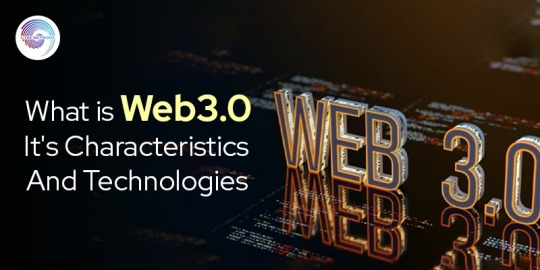
Web3 envisions a decentralised future internet powered by blockchain technology and token-based economics. This stands in contrast to the current Web 2.0, dominated by large tech companies. It’s key characteristics include Decentralisation, Blockchain technology, and token-based economics. Decentralisation refers to data and applications being spread across a network, giving users more control. Blockchain technology refers to securely recording and tracking information. Token-based economics uses digital tokens for various purposes like accessing services or representing ownership.
0 notes
Text
#web3 development#what is web3#web3 news#metaverse#decentralized#crypto#nfts#web3 developers#cryptocurrency#podcast#podcasting#podcaster#radio#talkshow#songs#ai generated#ai art#ai artwork#stable diffusion#web3 music#women in tech#minority leader
0 notes
Text
Metaverse: a new way for entrepreneurs for client engagement?
As consumers spend more time in the metaverse, it is inevitable that companies will start advertising in virtual reality locations. The Metaverse presents a huge marketing opportunity for businesses as it allows them to offer highly customized and engaging experiences to their customers. Instead of leaving comments on her company's Facebook page like a normal customer does today, in the future customers can initiate conversations with the brand itself, represented by a person or avatar. The Metaverse has the potential to permanently change consumer tastes and buying behavior in ways that are yet unpredictable. To keep their marketing strategies relevant and effective, brands need to keep an eye on evolving trends.

What is the appeal of the Metaverse?
The enormous financial potential of this technology has led some companies to create their own 'Omniverse'. Users need to understand that they enter the Metaverse to escape the real world. Because the Metaverse offers a fascinating opportunity to create your own personality and reality. Brands see the Metaverse as a way to create desirable realism and self-expression that users cannot develop or translate into real life.
Here are four ways brands and marketers can prepare for the future of the metaverse today. Learn more about the building blocks.
Web3, Blockchain, NFTs, Cryptocurrencies, and other connected related technologies form the Metaverse. No one person can know everything, so smart companies develop learning communities (interest groups, book clubs, etc.) to regularly evaluate, experiment, and invest in relevant technologies and phenomena. . Start building your exploration team today. Familiarize yourself with the concept of accessibility.
There is only one type of device in the metaverse. Everyone should be able to access metaverse content on many, if not all, devices. Common VR and AR hardware is available to enhance the metaverse user experience but is not required to consume content within the metaverse.
Master the basics of interoperability.
Metaverse is about interoperability, the ability of computerized systems to easily interact and communicate with each other. Therefore, the ability to generate shared assets is essential for metaverse content development. By changing your mindset and adopting a digital work ethic that prioritizes interoperability, you can create material that can later be used in the metaverse.
Visualize the future of your brand in the metaverse.
You may not be ready to invest in the Metaverse yet, but once you do, think and imagine how your brand will be experienced. Consider creating a pilot experience or vision statement to encourage out-of-the-box thinking. For example, a retailer's vision might be "we will be the best target retailer in the metaverse" or "build an outdoor power supply that helps people stay home in the metaverse". . .
How consumers will connect and engage with Metaverse?
Consumers always prefer an experience that gives them complete satisfaction when purchasing a product. Virtual goods are inherently interactive. They help us reach our goals, overcome obstacles, and express ourselves while entertaining us. I have seen the truth. Today, blockchain-enabled NFTs (non-fungible tokens) are demonstrating this in finance with very high stakes. Purchasing items can fill emotional gaps. Virtual goods are a prime example. "Power-ups" such as double his experience in the game, better weapons and armor, and a unique character wardrobe make him feel cooler, more inviting, and more awesome than he actually is. Thanks to the very smooth exchange of money and emotions, the virtual product provides instant gratification. Enterprise
Metaverse for business
AR, video rendering, and graphics-ready go hand in hand with a graphics processing unit that enables the technology industry to push the boundaries. Millions of people are creating the framework of the Metaverse to move between the physical and virtual worlds as naturally as sending an SMS, thanks to his home office and hybrid working methods.
NFTs are part of our daily lives, enabling us to buy, own, license and protect digital assets. Because the 3D data recorded is orders of magnitude larger than the datasets we process with 2D objects, the metaverse will spark a renaissance of innovation in privacy, security, and data protection. These applications will impact our lives at work and at home as earbuds, glasses and headsets become more affordable.
Is the Metaverse safe for your brand?
The company has always taken steps to provide security and a great experience. The Metaverse is more useful for people born in Generation Z and Alpha. Users should have technical knowledge of exchange system blockchain, cryptocurrencies and non-fungible tokens.
The Metaverse holds endless possibilities, especially in the trading area. According to tech company Wildbytes, 70% of his major brands will be in the metaverse within the next five years. Some companies have already said they will release new products by 2023, while others are opening malls, boutiques and virtual stores where avatars can buy his NFT products and pay with cryptocurrencies. I am looking for the possibility of building.
One of the most heavily invested sectors in the metaverse is retail. For example, Gucci has already launched its own virtual clothing line, the Gucci Virtual 25 sneaker, and H&M has just launched its first virtual collection through Nintendo's Social He simulation game Animal Crossing.
0 notes
Text
Metaverse : THE VIRTUAL REALITY

The metaverse is tied in with meeting our genuine and virtual universes to further develop our computerized encounters connected with web-based entertainment, gaming, clubbing, work or some other Web drove insight. The Web has consistently gone about as an extension for us to rise above into the virtual world, yet how solid is this greatness? What are our powers or conceivable outcomes in the virtual world?
0 notes
